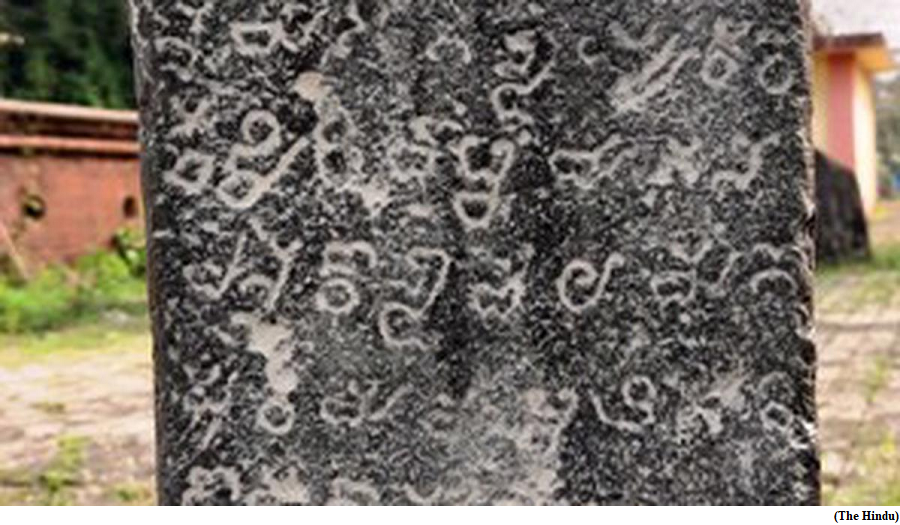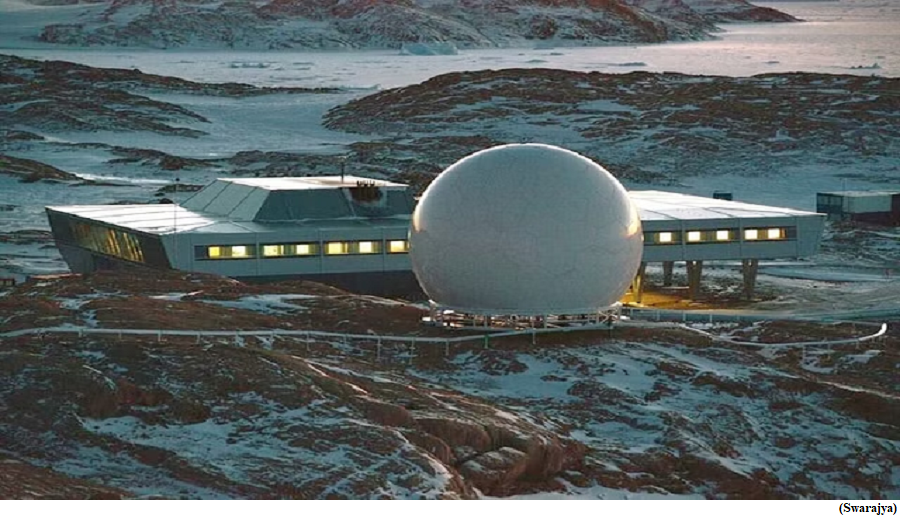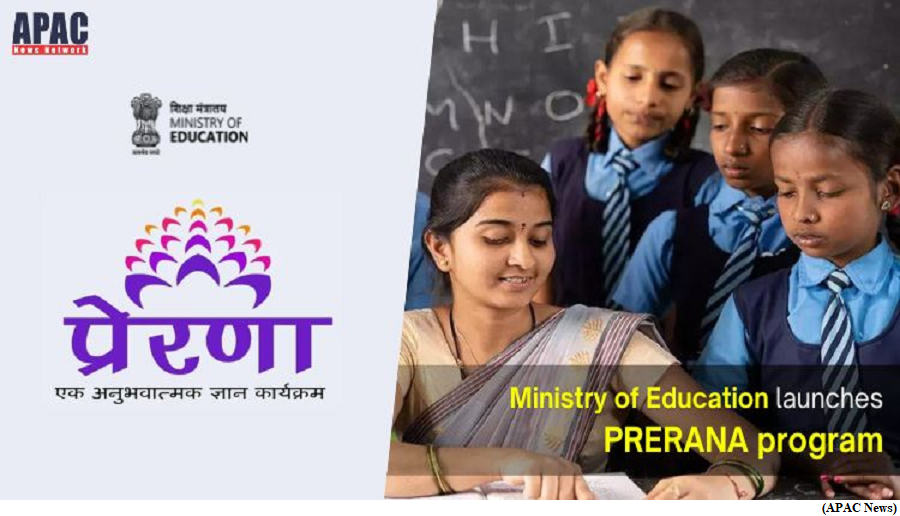10th century Kadamba inscription written in Kannada and Sanskrit found in Goa (GS Paper 1, Culture)

Why in news?
- An inscription written in Kannada and Sanskrit and said to be of 10th century A.D. Kadamba period has been discovered in the Mahadeva temple at Cacoda in southern Goa.
Details:
- Its epigraph is engraved in Kannada and Nagari characters.
- The inscription opens with an auspicious saying ‘be it well’ (Swasthi Shri), and records that when Talara Nevayya was administering the mandala, his son Gundayya having taken a vow to fulfil his father’s desire of capturing a gopura of the port of Goa, fought and died after fulfilling his father’s wish. Very interestingly, the record is composed as a vocal statement on the death of his son from the mouth of a lamenting father. It is in the literary style of Talangre inscription of Jayasimha I of the same period…”
About Kadambas of Goa:
- The Kadambas of Goa were the subordinates of Chalukyas of Kalyana. Chalukyan emperor Tailapa II appointed Kadamba Shasthadeva as mahamandaleshwara of Goa for his help in overthrowing the Rashtrakutas.
- Kadamba Shasthadeva conquered the city of Chandavara from the Shilaharas in 960 A.D. Later, he conquered the port of Gopakapattana (present Goa).
- Gundayya, the son of Talara Nevayya, may have participated in this battle, and won the port at the cost of his life.
- His father may have erected a memorial stone with the inscription in the temple of Mahadev of Cacoda to commemorate the heroic fight of his son.
India approves Rs 4,797 crore Prithvi scheme for Earth science research
(GS Paper 3, Science and Technology)
Why in news?
- The Union Cabinet has sanctioned the "Prithvi Vigyan (Prithvi)" scheme, a comprehensive initiative of the Ministry of Earth Sciences.
- With an investment of Rs 4,797 crore earmarked for the period from 2021 to 2026, this scheme is set to revolutionise India's approach to earth science research and application.

The Prithvi scheme integrates five existing sub-schemes:
- Atmosphere & Climate Research-Modelling Observing Systems & Services (ACROSS),
- Ocean Services, Modelling Application, Resources and Technology (O-SMART),
- Polar Science and Cryosphere Research (PACER),
- Seismology and Geosciences (SAGE), and
- Research, Education, Training and Outreach (REACHOUT).
- These programs collectively aim to enhance understanding of the Earth's vital signs and translate scientific knowledge into practical services that benefit society, the environment, and the economy.
What will Prithvi Scheme do?
- One of the primary objectives of Prithvi is to augment and sustain long-term observations across the atmosphere, ocean, geosphere, cryosphere, and solid earth. This will enable recording and monitoring of the Earth System's vital signs and changes.
- Additionally, the scheme focuses on developing predictive models for weather, ocean, and climate hazards, as well as advancing the understanding of climate change science.
- Exploration of the polar regions and high seas is another key aspect, aiming at discovering new phenomena and resources. The scheme also emphasizes the development of technology for the exploration and sustainable harnessing of oceanic resources for societal applications.
Implementation:
- The Ministry of Earth Sciences (MoES) is responsible for providing critical services related to weather, climate, ocean and coastal states, hydrology, seismology, and natural hazards.
Significance:
- These services are crucial for issuing forecasts, warnings, and alerts for various natural disasters such as tropical cyclones, floods, tsunamis, and earthquakes, thereby aiding in disaster preparedness and risk mitigation.
- Earth System Sciences encompass the study of the atmosphere, hydrosphere, geosphere, cryosphere, and biosphere, along with their complex interactions.
- The Prithvi scheme aims to address these components holistically, improving our understanding of Earth System Sciences and providing reliable services for the country.
Way Forward:
- The integrated research and development efforts across different MoES institutes will tackle grand challenges in weather, climate, oceanography, cryospheric studies, and seismology, exploring sustainable ways to harness both living and non-living resources.
Ministry of Education launches PRERANA program
(GS Paper 2, Education)
Why in news?
- The Department of School Education & Literacy, Ministry of Education, has launched ‘Prerana: An Experiential Learning program’, aiming to offer a meaningful, unique, and inspiring experience to all participants, thereby empowering them with leadership qualities.
- Prerana is driven by a strong commitment to integrate principles of Indian education system and the philosophy of value-based education which is a corner stone of the National Education Policy (NEP) 2020.

Key Highlights:
- Prerana is a week-long residential program for selected students of class IX to XII.
- It is an experiential and inspirational learning program for students with the best-in-class technology where heritage meets innovation.
- A batch of 20 selected students (10 boys and 10 girls) will attend the program, every week from various parts of the country.
- Prerana program will run from a Vernacular School, established in 1888, in one of the oldest living cities of India, Vadnagar, district Mehsana, Gujarat.
Curriculum:
- The curriculum of Prerana School prepared by IIT Gandhi Nagar is rooted in nine value based themes: Swabhiman and Vinay, Shaurya and Sahas, Parishram and Samarpan, Karuna and Sewa, Vividhta and Ekta, Satyanishtha and Shuchita, Navachar and Jigyasa, Shraddha aur Vishwas, and Swatantrata and Kartavya.
- The program based on above themes will inspire the youth and foster respect for Bharat's unity in diversity, embodying the spirit of "Vasudhaiva Kutumbakam" and will contribute by making the youth of today, a flame holder for Viksit Bharat.
- Towards this endeavour, the participants will be guided by mentors from prestigious institutions.
Activities:
- The day-wise program schedule will feature yoga, mindfulness, and meditation sessions, followed by experiential learning, thematic sessions, and hands on interesting learning activities.
- Evening activities will include visits to ancient and heritage sites, inspiration al film screenings, mission life creative activities, talent shows etc. ensuring a holistic learning approach.
- Apart from this, students will engage in diverse activities, embracing indigenous knowledge systems, latest State-of-Art technologies, and learnings from inspirational personalities.




